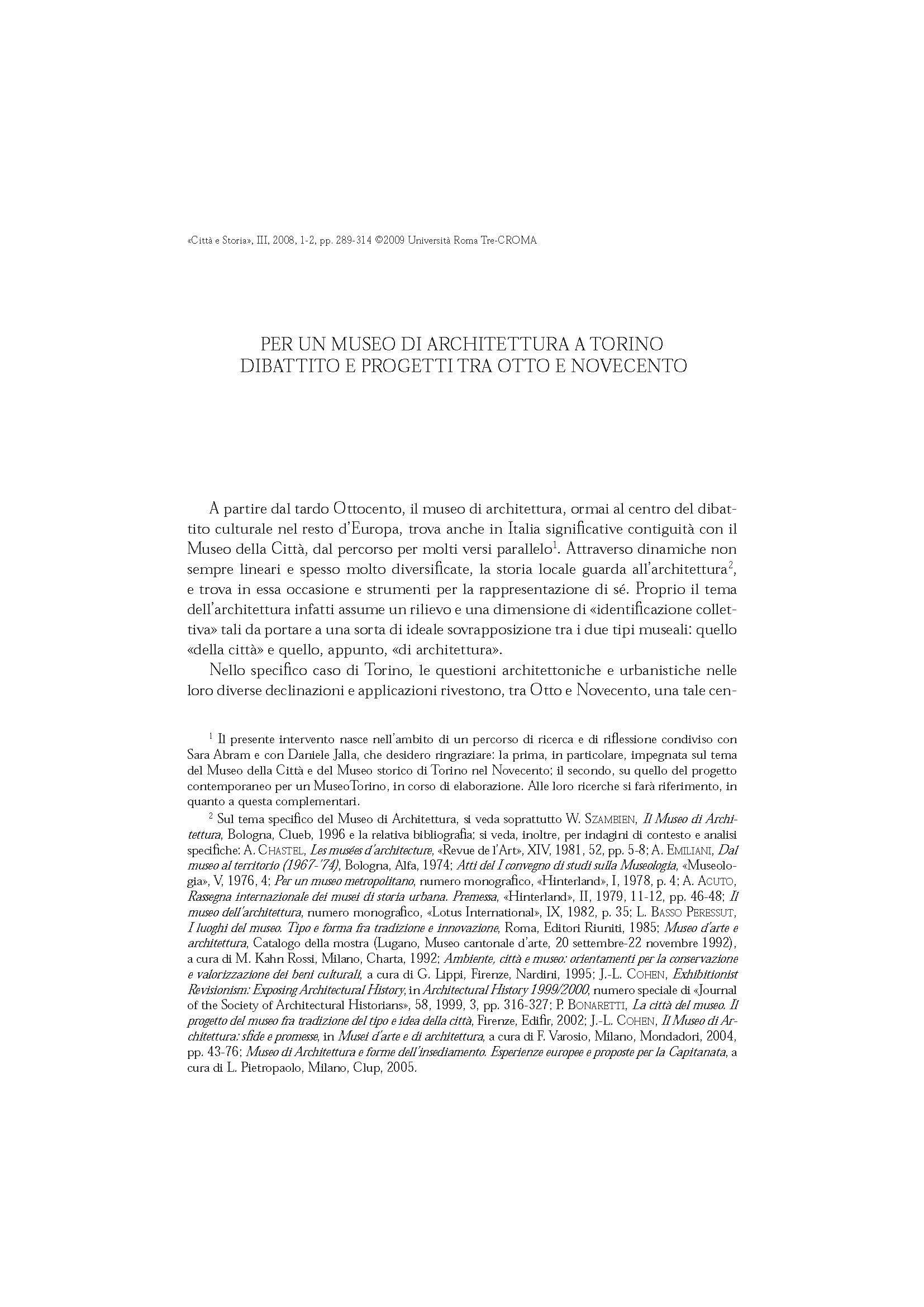Per un museo di architettura a Torino. Dibattito e progetti tra Otto e Novecento
6,00 €
From the mid nineteenth century onwards, the theme of architectural museum had had a pivotal role in the cultural arena. This mainly concerns the rest of Europe, but not Italy where a similar part was played by the museum of the city. Local historians considered architecture as an opportunity and an instrument for representing special events.
In Torino, during the nineteenth and twentieth centuries, architectural and town-planning issues played a central role in the urban context as architecture encompassed both past models and future prospects. Therefore, architecture became a key factor in the ongoing trend, thereby prompting the foundation of special museums.
Nevertheless, a dedicated Museum of Architecture was never established. What was set up, however, was a series of special exhibitions often directly associated to some major event: from the Esposizione Generale Italiana [Italian General Exhibition] of 1884 to the Prima Esposizione Italiana di Architettura [First National Exhibition of Architecture] in 1890, and right up to the 1963 exhibition on the Baroque. We also to consider Vittorio Viale’s dreams of a Museum of History.
About this kind of perspective, a long and eventful discussion persisted for over a century. Today, much remains of the many suggestions. It included the replacement of collections mostly stored in the city museums ready for new hypotheses of use.
From the mid nineteenth century onwards, the theme of architectural museum had had a pivotal role in the cultural arena. This mainly concerns the rest of Europe, but not Italy where a similar part was played by the museum of the city. Local historians considered architecture as an opportunity and an instrument for representing special events.
In Torino, during the nineteenth and twentieth centuries, architectural and town-planning issues played a central role in the urban context as architecture encompassed both past models and future prospects. Therefore, architecture became a key factor in the ongoing trend, thereby prompting the foundation of special museums.
Nevertheless, a dedicated Museum of Architecture was never established. What was set up, however, was a series of special exhibitions often directly associated to some major event: from the Esposizione Generale Italiana [Italian General Exhibition] of 1884 to the Prima Esposizione Italiana di Architettura [First National Exhibition of Architecture] in 1890, and right up to the 1963 exhibition on the Baroque. We also to consider Vittorio Viale’s dreams of a Museum of History.
About this kind of perspective, a long and eventful discussion persisted for over a century. Today, much remains of the many suggestions. It included the replacement of collections mostly stored in the city museums ready for new hypotheses of use.

